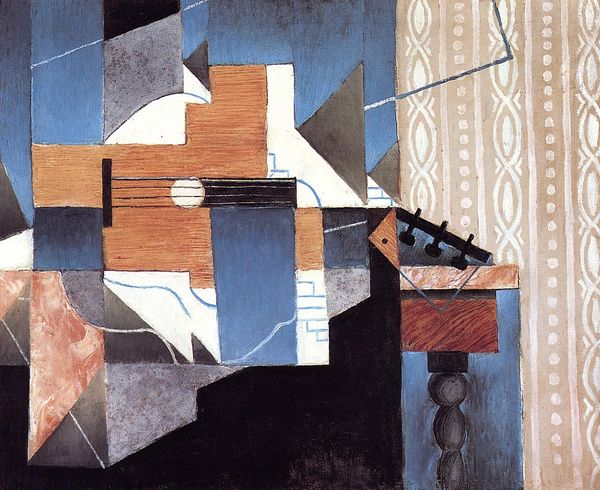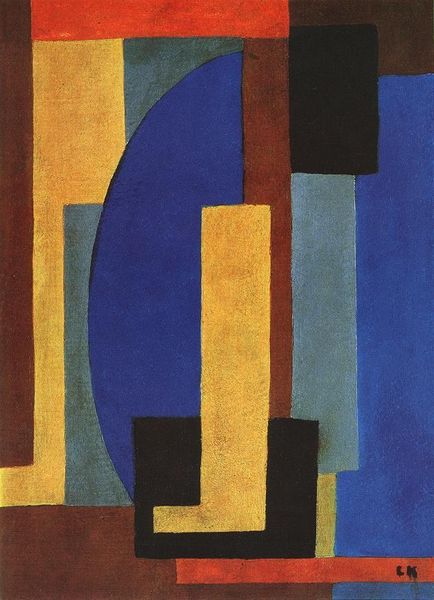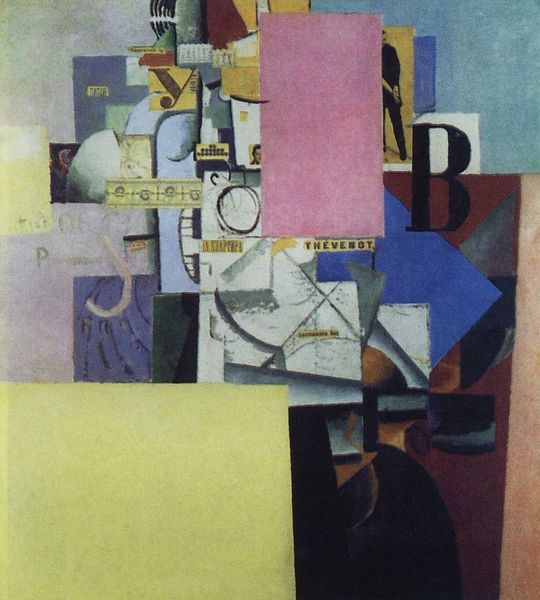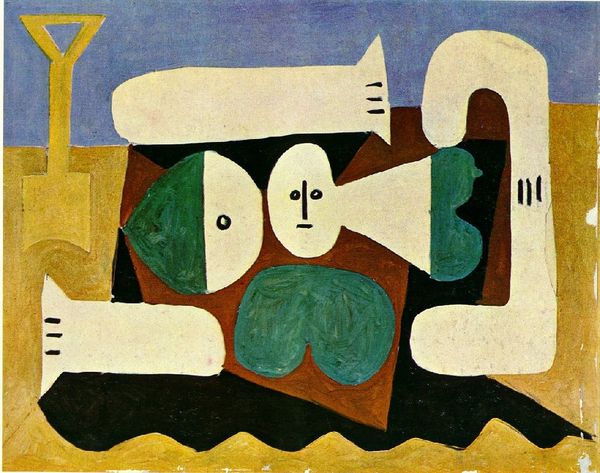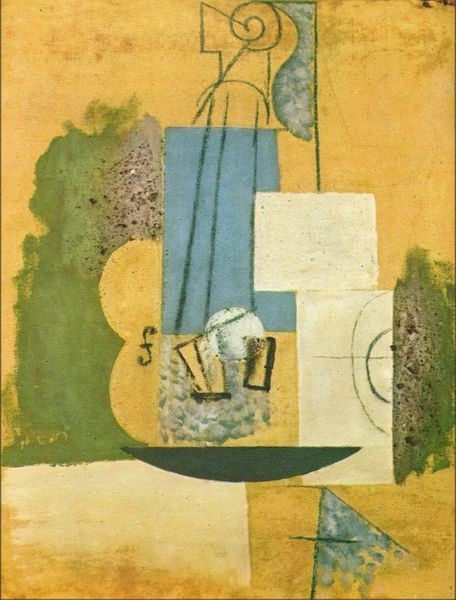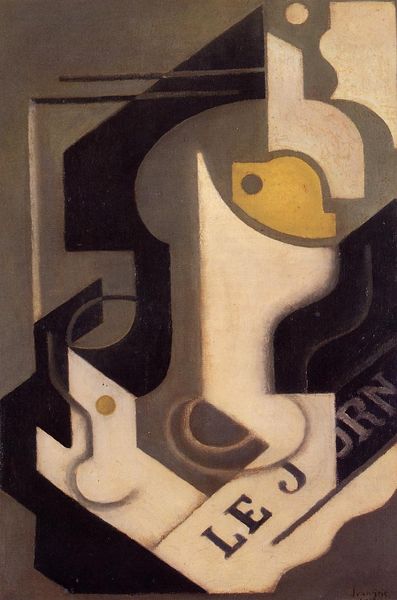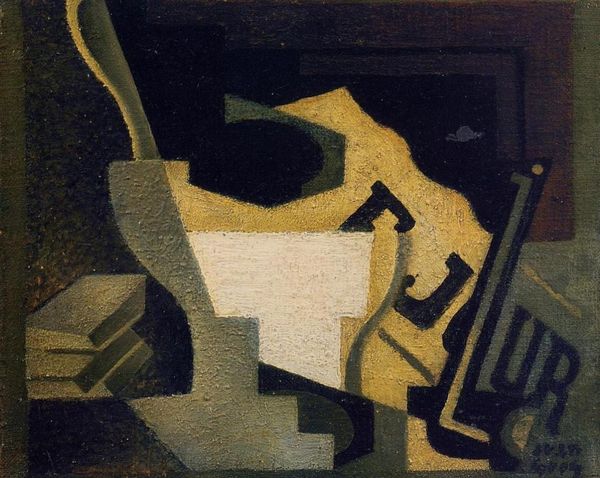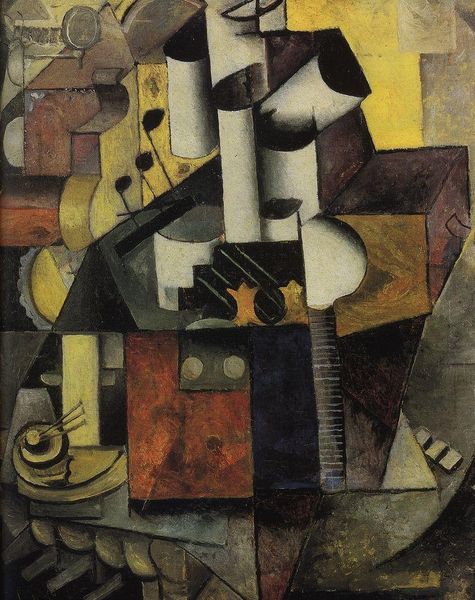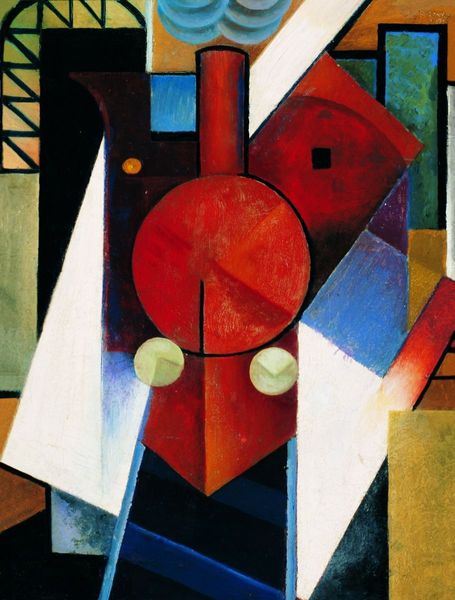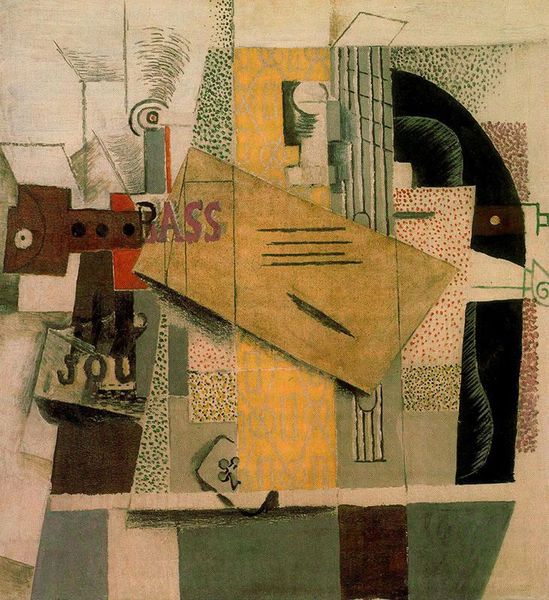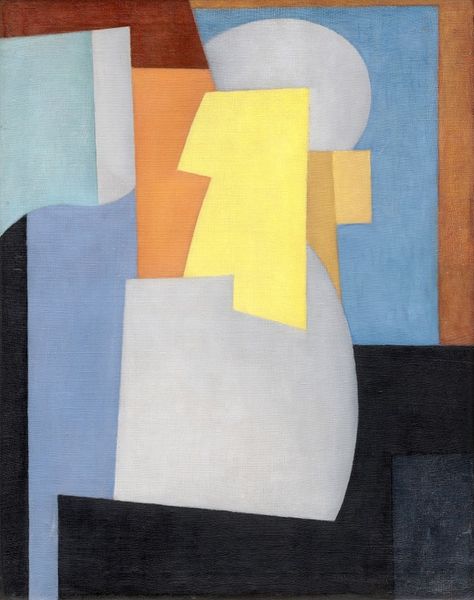
painting, oil-paint
#
cubism
#
painting
#
oil-paint
#
oil painting
#
studio composition
#
geometric
#
abstraction
#
line
#
modernism
Dimensions: 82.5 x 119 cm
Copyright: Public domain US
Curator: Looking at Pablo Picasso’s "Guitar and Jug on a Table," painted in 1918, I find myself immediately drawn to its muted, almost somber palette. Editor: It strikes me as intentionally austere, wouldn't you agree? A conscious shift in focus from earlier exuberance within cubism, perhaps towards something…sturdier. Look at the textures; oil paint applied in these solid blocks. The jug and guitar appear distilled into simplified forms. Curator: Absolutely. Consider the context. 1918—World War I is drawing to a close. Europe is in ruins. This work, in its abstraction, speaks to a fracturing of the established order, a need to rebuild, to redefine reality, doesn’t it? The choice of subject matter—simple, domestic objects—suggests a yearning for stability amid chaos. Editor: Yes, the seeming banality is actually its power. The careful laying of each color, the way the guitar strings are merely dark, vertical lines, all point towards the artist’s engagement with the fundamentals of representation, which becomes all the more crucial in the era you just described. Curator: The rise of mass production, urbanization... These massive socio-economic changes shaped both artistic patronage and reception. How does an artist navigate that? Editor: Through simplification and experimentation, which both required conscious and deliberate labour. There's a rawness to its construction which speaks volumes, if you ask me. No glossing over the basics! Curator: In a way, its muted tones challenge the grand narratives typically associated with art, which shifts our attention to art's unique position to show daily life. Editor: A powerful message constructed through elemental form, even as we grapple with its historical meaning today. Curator: A remarkable testament to how art reflects and shapes the public understanding of the changing world.
Comments
No comments
Be the first to comment and join the conversation on the ultimate creative platform.
